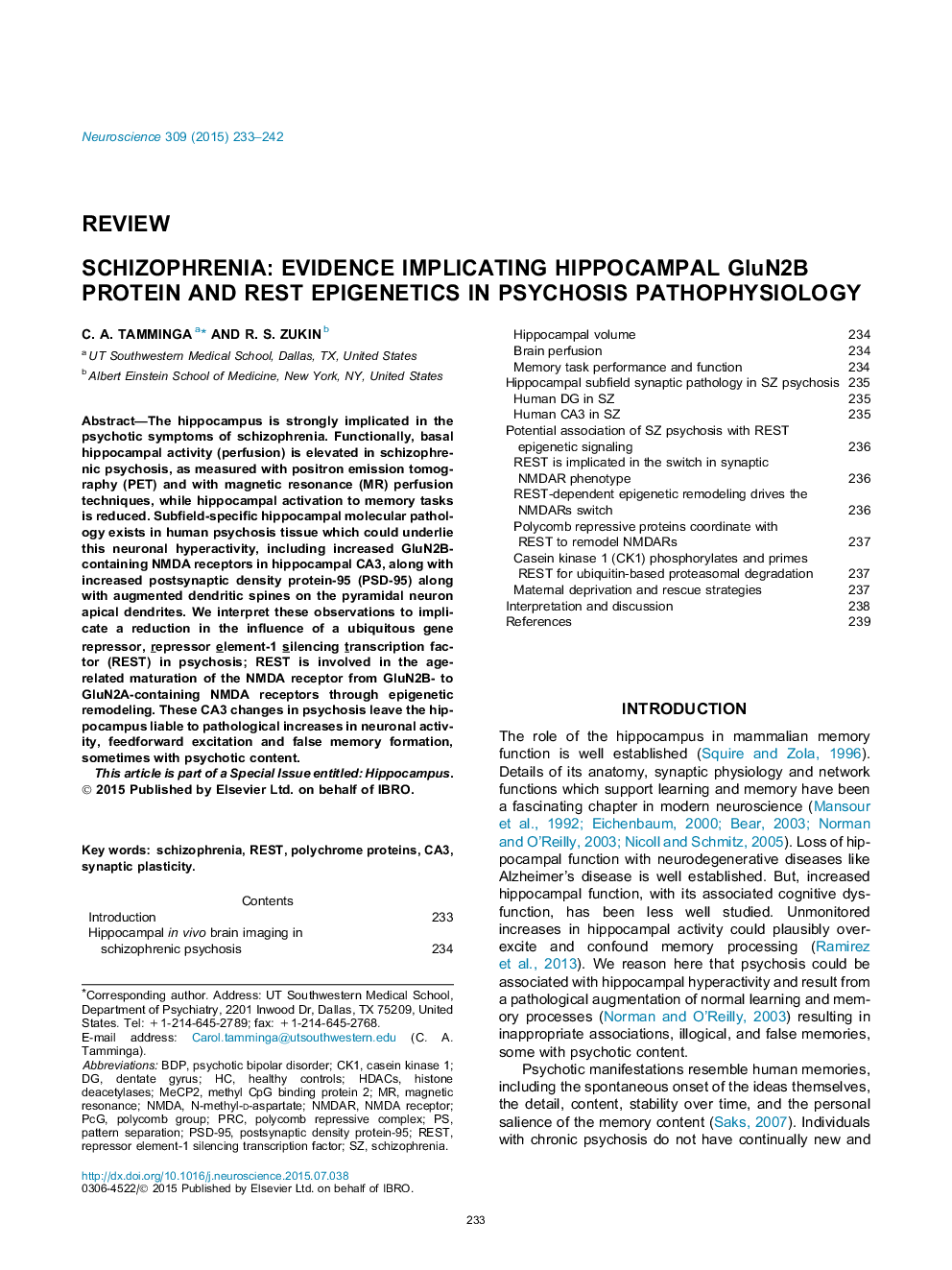| Article ID | Journal | Published Year | Pages | File Type |
|---|---|---|---|---|
| 6271773 | Neuroscience | 2015 | 10 Pages |
â¢The hippocampus shows in vivo hyperactivity in schizophrenic psychosis.â¢In schizophrenia, CA3 shows synaptic strengthening, which is not present in CA1.â¢Golgi staining reveals increased dendritic spine density in CA3 in schizophrenia.â¢These findings can be explained by the reduced activity of REST.â¢REST is responsible for the GluN2BâGluN2A maturational switch during development.
The hippocampus is strongly implicated in the psychotic symptoms of schizophrenia. Functionally, basal hippocampal activity (perfusion) is elevated in schizophrenic psychosis, as measured with positron emission tomography (PET) and with magnetic resonance (MR) perfusion techniques, while hippocampal activation to memory tasks is reduced. Subfield-specific hippocampal molecular pathology exists in human psychosis tissue which could underlie this neuronal hyperactivity, including increased GluN2B-containing NMDA receptors in hippocampal CA3, along with increased postsynaptic density protein-95 (PSD-95) along with augmented dendritic spines on the pyramidal neuron apical dendrites. We interpret these observations to implicate a reduction in the influence of a ubiquitous gene repressor, repressor element-1 silencing transcription factor (REST) in psychosis; REST is involved in the age-related maturation of the NMDA receptor from GluN2B- to GluN2A-containing NMDA receptors through epigenetic remodeling. These CA3 changes in psychosis leave the hippocampus liable to pathological increases in neuronal activity, feedforward excitation and false memory formation, sometimes with psychotic content.
